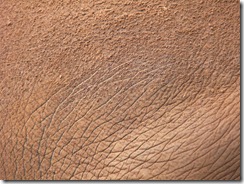Subtext 2.5 Skin Improvements
Deploying a Subtext skin used to be one of the biggest annoyances with Subtext prior to version 2.5. The main problem was that you couldn’t simply copy a skin folder into the Skins directory and just have it work because the configuration for a given skin is centrally located in the Skins.config file.
 In
other words, a skin wasn’t self contained in a single folder. With
Subtext 2.5, this has changed. Skins are fully self contained and there
is no longer a need for a central configuration file for skins.
In
other words, a skin wasn’t self contained in a single folder. With
Subtext 2.5, this has changed. Skins are fully self contained and there
is no longer a need for a central configuration file for skins.
What this means for you is that it is now way easier to share skins. When you get a skin folder, you just drop it into the /skins directory and you’re done!
In most cases, there’s no need for any configuration file whatsoever. If your skin contains a CSS stylesheet named style.css, that stylesheet is automatically picked up. Also, with Subtext 2.5, you can provide a thumbnail for your skin by adding a file named SkinIcon.png into your skin folder. That’ll show up in the improved Skin picker.
When To Use A Skin.config File
Each skin can have its own manifest file named Skin.config.This file is useful when you have multiple CSS and JavaScript files you’d like to include other than style.css (though even in this case it’s not absolutely necessary as you can reference the stylesheets in PageTemplate.ascx directly).
The other benefit of using the skin.config file to reference your
stylesheets and script files is you can take advantage of our ability to
merge these files together at runtime using the StyleMergeMode and
ScriptMergeMode attributes.
Also, in some cases, a skin can have multiple themes differentiated by stylesheet as described in this blog post. A skin.config file can be used to specify these skin themes and their associated CSS file.
Creating a Skin.config file
Creating a skin.config file shouldn’t be too difficult. If you already have a Skins.User.config file, it’s a matter of copying the section of that file that pertains to your skin into a skin.config file within your skin folder and removing some extraneous nodes.
Here’s an example of a new skin.config file for my personal skin.
<?xml version="1.0" encoding="utf-8" ?>
<SkinTemplates>
<SkinTemplate Name="Haacked-3.0">
<Scripts>
<Script Src="~/scripts/lightbox.js" />
<Script Src="~/scripts/XFNHighlighter.js" />
</Scripts>
<Styles>
<Style href="~/css/lightbox.css" />
<Style href="~/skins/_System/csharp.css" />
<Style href="~/skins/_System/commonstyle.css" />
<Style href="~/skins/_System/commonlayout.css" />
<Style href="~/scripts/XFNHighlighter.css" />
<Style href="IEPatches.css" conditional="if IE" />
</Styles>
</SkinTemplate>
</SkinTemplates>
If you compare it to the old format, you’ll notice the <Skins> element
is gone and there’s no need to specify the TemplateFolder since it’s
assumed the folder containing this file is the template folder.
Hopefully soon, we’ll provide more comprehensive documentation on our wiki so you don’t have to go hunting around my blog for information on how to skin your blog. My advice is to copy an existing skin and just tweak it.
Comments
19 responses